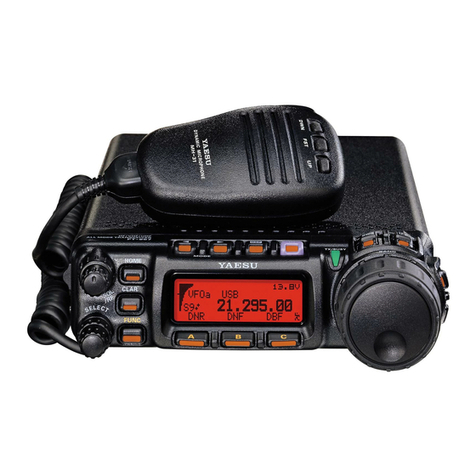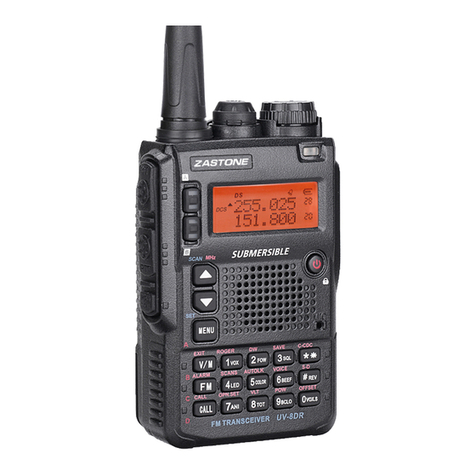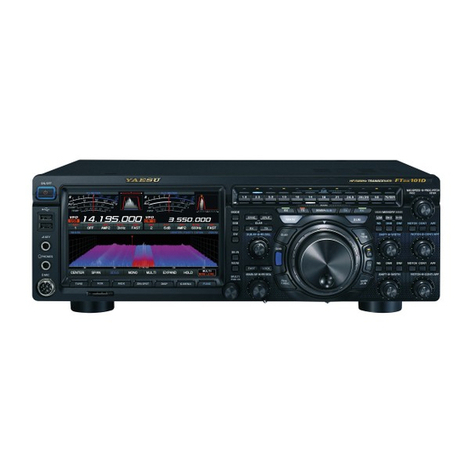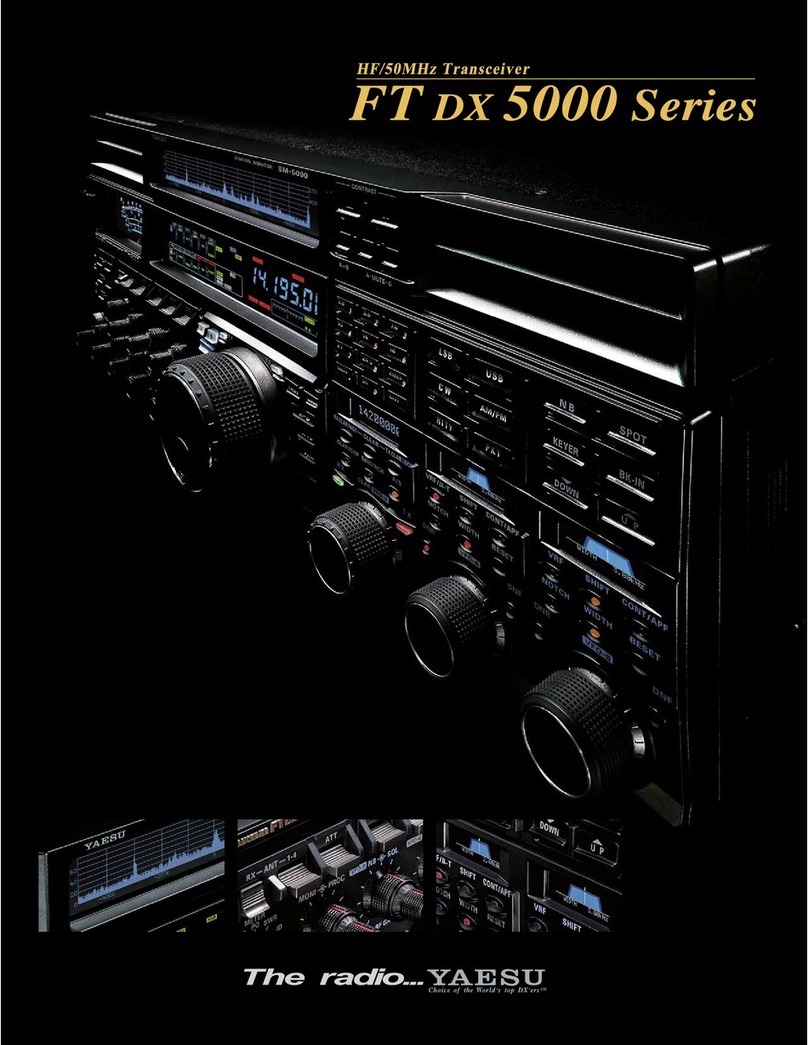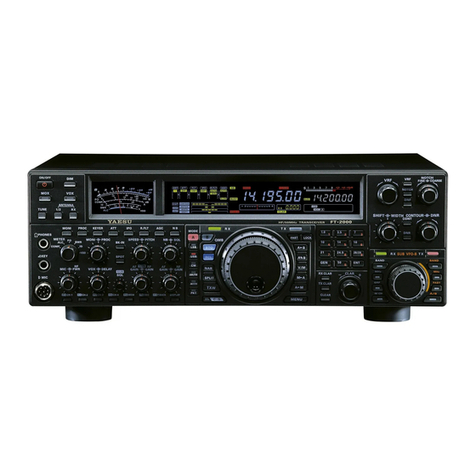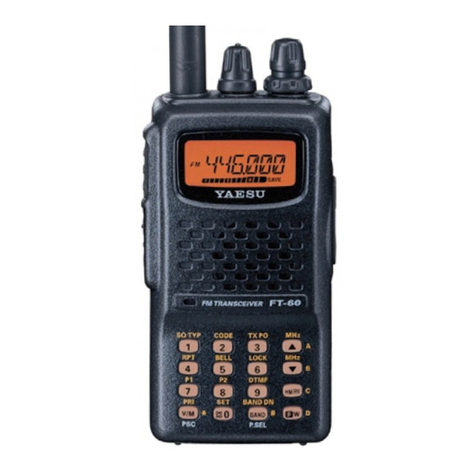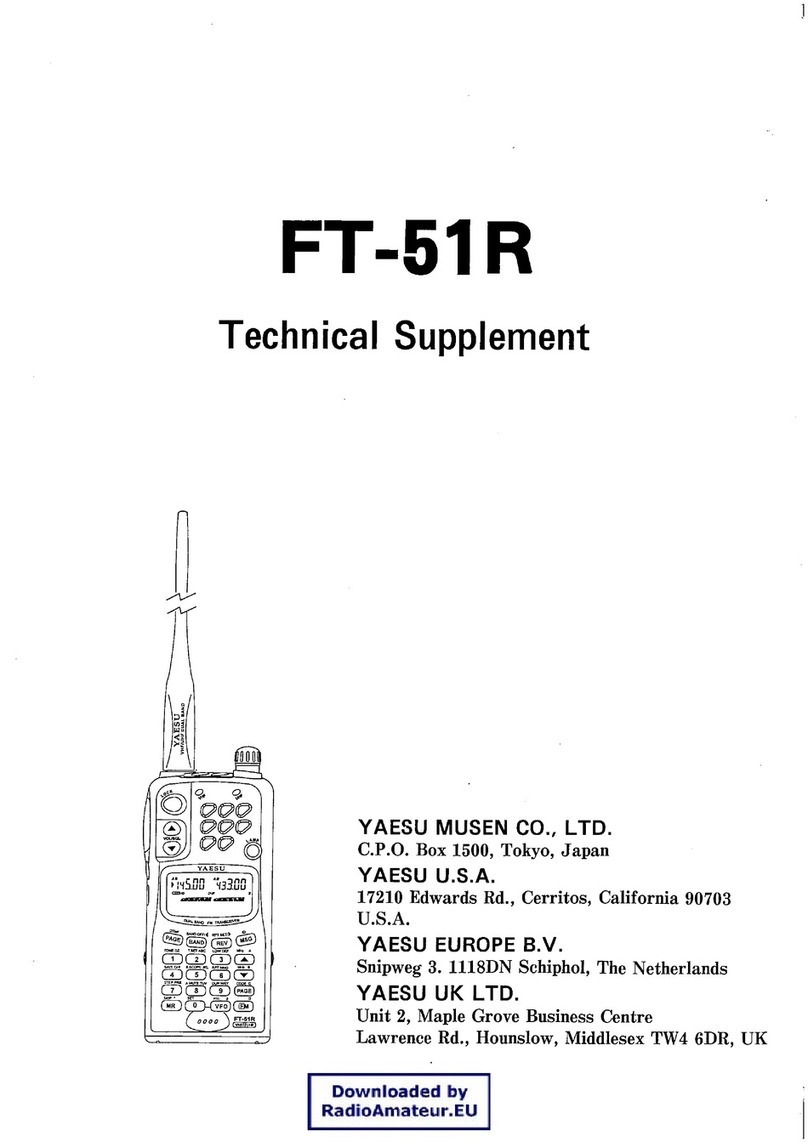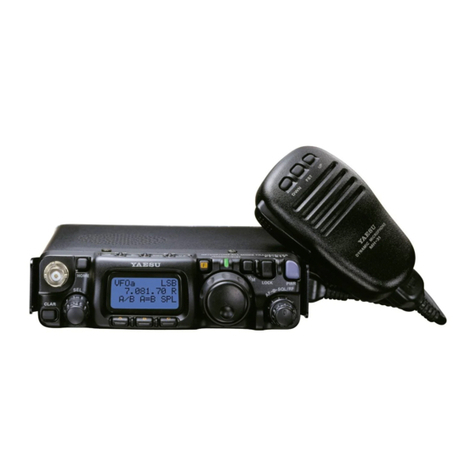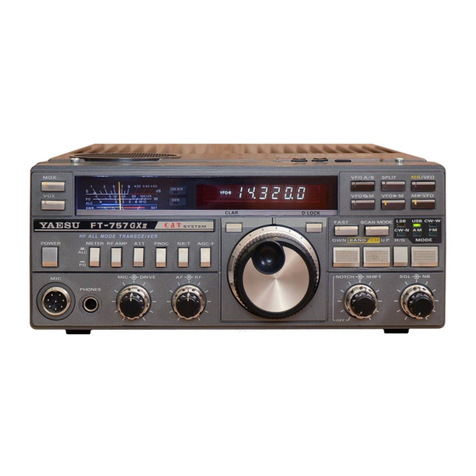Do not use the battery pack for any model other than
the specied transceiver.
A re, leak, overheating, explosion, or ignition can result.
Do not make very long transmissions.
The main body of the transceiver may overheat, resulting in
a failure or burns.
Do not disassemble or make any alteration to this prod-
uct.
An injury, electric shock, or failure can result.
Keep the terminals of the battery pack clean.
If terminal contacts are dirty or corroded, a re, leak, over-
heating, explosion, or ignition can result.
Do not handle the battery pack or charger with wet
hands. Do not insert or remove the power plug with wet
hands.
An injury, leak, re, or failure can result.
If smoke or strange odor is emitted from the main body,
battery pack, or battery charger, immediately turn the
transceiver off; remove the battery pack, and remove
the power plug from the outlet.
A fire, leak, overheating, damage, ignition, or failure can
result. Contact the dealer from which you purchased this
product or Yaesu Customer Support.
Do not use the battery pack which is externally dam-
aged or deformed.
A re, leak, heating, explosion, or ignition can result.
Do not use any battery charger which is not specied
by Yaesu.
A re or failure can result.
When transmitting, keep the transceiver at least 5.0 mm
(3/16 inch) away from your body. Use only the supplied an-
tenna. Do not use modied or damaged antennas.
If charging of the battery pack cannot be completed
within the specied charging time, immediately remove
the power plug of the battery charger from the outlet.
A re, leak, overheating, explosion, or ignition can result.
CAUTION
Do not dangle or throw this product by holding its an-
tenna.
This product can hit and injure someone. In addition, doing
so can result in a transceiver failure or damage.
Do not use transceiver in a crowded place.
The antenna can hit someone, resulting in an injury.
Do not place this transceiver in a place subject to direct
sun-light or near a heater.
The transceiver can deform or discolor.
Do not place this transceiver in a humid or dusty place.
A re or failure can result.
During transmission, keep the antenna as far from you
as possible.
Long-time exposure to electromagnetic waves can have a
negative impact on your health.
Do not clean the case with thinner or benzene.
Use a soft, dry cloth to clean the case.
If the transceiver is not being used for an extended period,
turn it off and remove the battery pack for safety.
Do not drop, strike, or throw the transceiver.
A failure or damage may result.
Keep magnetic cards and video tape away from the
transceiver.
The data recorded on cash cards or video tape can be
erased.
Charge the battery pack within the temperature range
from +5 °C to +35 °C (+41 °F to +95 °F).
Charging the battery pack outside this temperature range
can cause leak, overheating, decrease in performance, or
reduction in service life can result.


